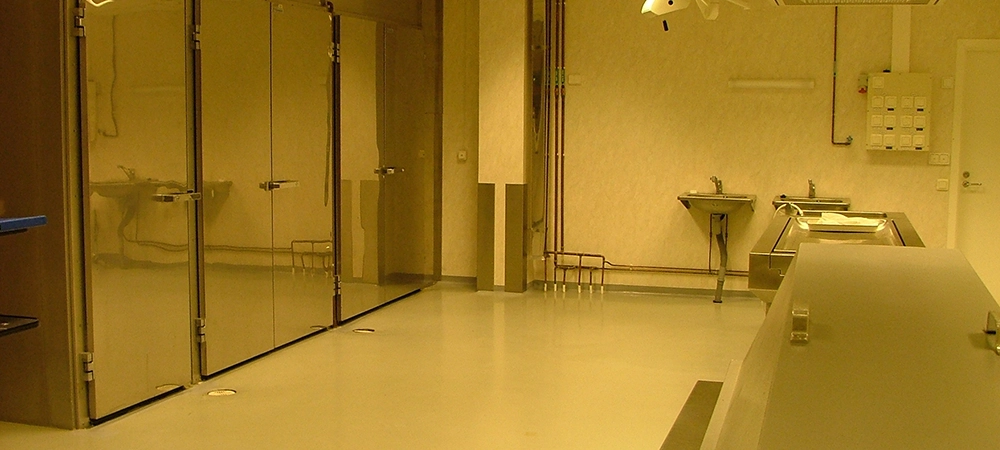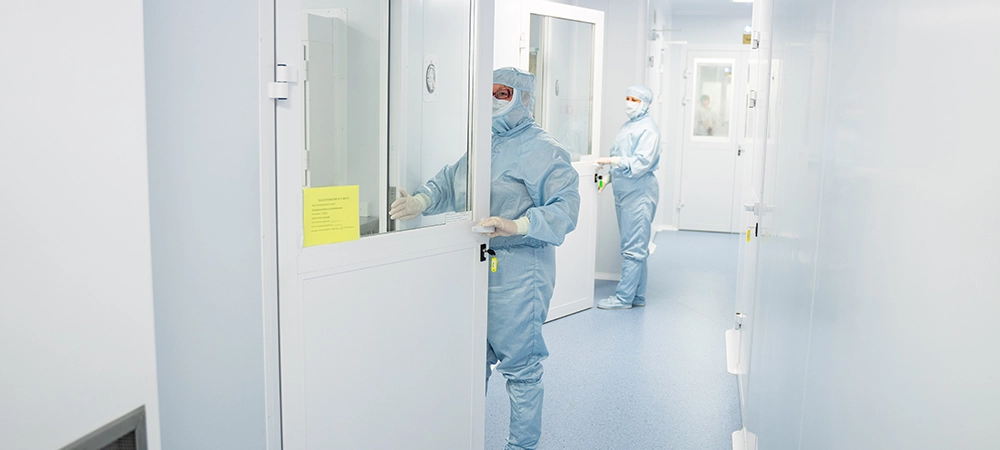In industries where precision is paramount, cleanrooms play a vital role. Maintaining a cleanroom goes beyond surface cleanliness; it’s about ensuring a contaminant-free environment for critical processes.
Regularly disinfect your equipment using a cleanroom-approved disinfectant to keep a clean room. You’ll also want to replace the air filters of HEPA/ULPA systems to ensure the air in your cleanroom is always pure.
This detailed guide offers an in-depth look at how to maintain a cleanroom, drawing insights from industry best practices.
The Best Maintenence Practices for Cleanroom
Cleanrooms are categorized by ISO 14644-1 standards based on the allowable particle concentration. Adhering to these standards is crucial for semiconductor manufacturing, pharmaceuticals, and biotech industries.
The cleanroom’s classification dictates the rigour of maintenance protocols required to maintain the necessary environmental control. Here are some cleanroom maintenance tips to adhere to.
Daily and Periodic Cleaning Procedures
It’s essential to clean your room daily, starting by cleaning the surfaces and equipment before moving to the floors.
Surface and Equipment Cleaning
- Routine Surface Cleaning: Daily wipe-down of surfaces with cleanroom-approved disinfectants is essential.
- Equipment Cleaning: Regularly disinfect equipment to prevent particle accumulation.
Floors and Walls
- Mopping: Use special mops with ultra-pure water or appropriate cleaning solutions.
- Wall Cleaning: Clean walls periodically with non-shedding wipes and suitable cleaning agents.
Controlling Contamination
To control cleanroom contamination, do the following.
Gowning Procedures
- Strict Gowning Protocols: Personnel should wear appropriate protective clothing, from gowns and gloves to full suits, depending on the cleanroom class.
- Training: Regular training on proper gowning techniques to minimize human-borne contamination.
Material Introduction
- Air Showers and Pass-throughs: Use air showers for personnel and pass-through chambers for materials to minimize contamination.
Related Article: What is a cold room?
Air Filtration and HVAC Maintenance
Your HVAC system isn’t left out. Keeping its air filters clean is one way to maintain a clean room.
- HEPA/ULPA Filters: Regularly replace and test HEPA/ULPA filters to ensure optimal air purity.
- HVAC System Checks: Frequent inspection and maintenance of HVAC systems are crucial for continuous air quality control.
Monitoring and Documentation
Document and monitor essential details in your cleanroom, like the particles and maintenance activities.
Environmental Monitoring
- Particle Counting: Regular monitoring of particle levels to ensure compliance with the specified cleanroom class.
- Temperature and Humidity Control: Consistent monitoring and adjustment of temperature and humidity levels.
Record-Keeping
- Maintenance Logs: Keep detailed records of all cleaning and maintenance activities.
- Incident Reports: Document any deviations and the subsequent corrective actions taken.

Advanced Cleaning Techniques
Some necessary cleanroom monitoring requirements to remember are,
Bioburden Control
- Disinfection Protocols: Employ rigorous disinfection protocols alongside standard cleaning in areas concerned with biological contamination.
Cleaning Agents and Tools
- Choosing the Right Tools: Use non-particulate tools and mops designed for cleanrooms.
- Approved Cleaning Agents: Utilize effective cleaning agents that do not contribute to contamination.
Responding to Contamination
Here’s how to respond to contamination in a cleanroom
- Immediate Action: Quick response to any contamination incident to minimize impact.
- Investigation and Correction: Investigate the source, take corrective actions, and document the process.
Periodic Reviews and Training
Conducting regular reviews and training sessions is vital:
- Audit and Inspections: Regular internal audits and readiness for external inspections.
- Continuous Training: Ongoing training for staff on new procedures and technologies.
Special Considerations
Here are special considerations to bear in mind when maintaining a cleanroom.
Handling Hazardous Materials
- Additional safety measures and protocols are necessary in cleanrooms dealing with hazardous materials.
- Implement specialized waste disposal systems and containment procedures.
Upgrading and Renovating
- Stay abreast of technological advancements in cleanroom maintenance.
- Consider periodic upgrades to incorporate new technologies and improve efficiency.
Related Article: Different Types of Cold Rooms: A Comprehensive Guide to Types, Purposes and Benefits

Service and Maintain Your Cleanroom with Ease
Maintaining a cleanroom requires meticulous planning, consistent execution of cleaning and maintenance protocols, and a commitment to continuous improvement. At Can-trol Environmental Systems, we believe in providing you with the knowledge and tools to keep your cleanrooms functioning at their best.
By adhering to these guidelines, you can ensure your cleanroom facilities are compliant, efficient, and effective in supporting critical operations. Reach out to us at 905-415-814 for your cleanrooms, cold rooms and controlled environment rooms.
